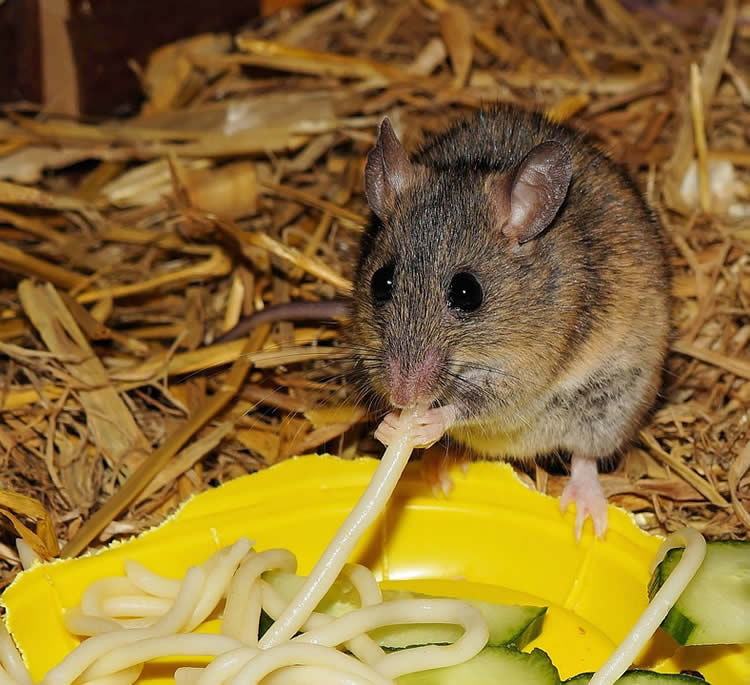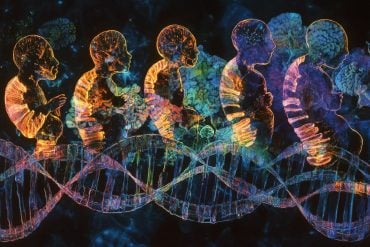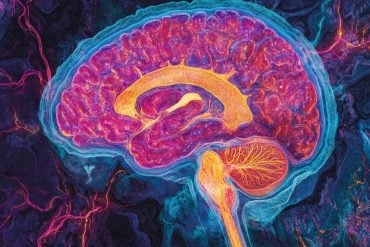Summary: A new study has identified a biological pathway associated with the risk for developing an eating disorder.
Source: University of Iowa Health Care.
Study also identifies the first biological pathway associated with the risk of developing an eating disorder.
Giving mice a gene mutation linked to eating disorders in people causes feeding and behavior abnormalities similar to symptoms often seen in patients with eating disorders. Only female mice are affected by the gene mutation, and some of the abnormalities in the female mice depend on whether they are housed alone or together with other mice.
Eating disorders like anorexia nervosa and bulimia are serious, sometimes life-threatening illnesses that affect millions of people in the United States, and are more prevalent in women. Although it has long been known that genetics play a major role in the risk of developing eating disorders, very little is understood about which genes are mutated in patients with eating disorders and how those mutations affect the brain and behavior.
In 2013, researchers led by University of Iowa scientists Michael Lutter, MD, PhD, and Huxing Cui, PhD, identified two genes from two different families that are associated with an increased risk of developing an eating disorder. In the new study, published Oct. 13 in the journal Biological Psychiatry, the team has developed a mouse model to investigate the behavioral effects of one of those gene mutations.
The gene in question is called histone deacetylase 4 (HDAC4). It is a transcriptional repressor, which means it turns off other genes. To create the new mouse model of this gene mutation, the researchers used CRISPR-Cas9 gene editing to incorporate the human mutation in the mouse HDAC4 gene.
“The mutated female mice have several behaviors relevant to eating disorders,” explains Lutter, formerly at the University of Iowa and now a psychiatrist at the Eating Recovery Center of Dallas. “In particular, they work less hard to obtain high-calorie food when they are hungry, which is important because failure to increase food intake in response to hunger is a core feature of anorexia nervosa. Also, they have compulsive grooming, which is considered a model of obsessive-compulsive disorder in mice. OCD-like behaviors are very common in patients with anorexia nervosa as well.”
“These findings support a role for the HDAC4 mutation in causing eating disorders in humans and gives us an important tool (the mouse model) to study the neurobiological basis of eating disorders,” adds lead study author Cui, assistant professor of pharmacology at the UI Carver College of Medicine.
The study also revealed a surprising relationship between the feeding and behavior abnormalities and the animals’ living conditions. The genetically altered female mice were more anxious and irritable when they were in a group living situation than when they were individually housed and seemed to find social interaction less rewarding, Lutter says.
The genetically altered mice also allowed the researchers to investigate the biological pathways involved in the animals’ feeding and behavioral problems. Using bioinformatics analysis, the researchers identified genes that are controlled by HDAC4. They discovered that the HDAC4 mutation leads to a decrease in the expression of genes involved in synthesis of the neurotransmitter glutamate.
“This is important because glutamate has previously been implicated in feeding, obsessive-compulsive disorder (OCD), and depression,” Lutter says. “So this one observation could explain a whole array of behavioral deficits.”
“This is the first biological pathway that’s been identified as being associated with the risk of developing an eating disorder,” Cui notes. “This work will open new avenues of research to understand the neurobiological basis of eating disorders and identify new opportunities for development of medications to treat eating disorders.”

In addition to helping researchers tease out the biological pathways underlying eating disorders and identifying potential targets for new therapies, this mouse model could also be used to screen potential drugs to treat eating disorders.
One of the first questions the team will tackle is why the HDAC4 mutation affected only female mice. Eating disorders are 2 to 3 times more prevalent in women than men, and sex hormones play an important role in the development of eating disorders. The researchers will use the mice to investigate how sex hormones like estrogen affect brain function.
In addition to Cui and Lutter, the UI team involved researchers from the Departments of Psychiatry, Pharmacology, and Pediatrics: Michael Khan, Kenji Satio, Kevin Davis, Ian Kidder, Latisha McDaniel, Benjamin Darbro, and Andrew Pieper.
The research was supported in part by grants from the Brain and Behavior Foundation, The Klarman Family Foundation, the National Institute for Mental Health (MH109920), the American Heart Association, and the Fraternal Order of Eagles Diabetes Research Center at the UI.
Funding: The study was funded by the Brain and Behavior Foundation, Klarman Family Foundation, NIH/National Institute for Mental Health, American Heart Association, Fraternal Order of Eagles Diabetes Research Center at the University of Iowa.
Source: Jennifer Brown – University of Iowa Health Care
Image Source: NeuroscienceNews.com image is in the publid comain.
Original Research: The study will appear in Biological Psychiatry.
[cbtabs][cbtab title=”MLA”]University of Iowa Health Care “Eating Disorder Gene Alters Feeding and Behavior in Female Mice.” NeuroscienceNews. NeuroscienceNews, 13 October 2016.
<https://neurosciencenews.com/genetics-feeding-behavior-5295/>.[/cbtab][cbtab title=”APA”]University of Iowa Health Care (2016, October 13). Eating Disorder Gene Alters Feeding and Behavior in Female Mice. NeuroscienceNew. Retrieved October 13, 2016 from https://neurosciencenews.com/genetics-feeding-behavior-5295/[/cbtab][cbtab title=”Chicago”]University of Iowa Health Care “Eating Disorder Gene Alters Feeding and Behavior in Female Mice.” https://neurosciencenews.com/genetics-feeding-behavior-5295/ (accessed October 13, 2016).[/cbtab][/cbtabs]






